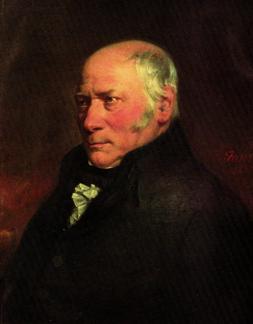As Nina Morgan discovers, if you want to get ahead, it's not necessarily what you know, but who you mix with.
 In the 19th Century class divisions ran deep, and then – as now – London represented the centre of the English social universe. No one resented this unpleasant aspect of social life more than William Smith (1769 – 1839]. As a practitioner or practical geologist based around Bath, Smith found it difficult promote his discoveries and to find sponsors to enable the publication of his 1815 Map of the Strata of England and Wales. As Smith's nephew and protégé, the geologist John Phillips (1800 – 1874) recorded in his 1844 Memoirs of William Smith, LLD , Smith "was almost unnoticed" by the gentlemen of the Geological Society.
In the 19th Century class divisions ran deep, and then – as now – London represented the centre of the English social universe. No one resented this unpleasant aspect of social life more than William Smith (1769 – 1839]. As a practitioner or practical geologist based around Bath, Smith found it difficult promote his discoveries and to find sponsors to enable the publication of his 1815 Map of the Strata of England and Wales. As Smith's nephew and protégé, the geologist John Phillips (1800 – 1874) recorded in his 1844 Memoirs of William Smith, LLD , Smith "was almost unnoticed" by the gentlemen of the Geological Society.
But working on the theory that 'if you can't beat 'em, join 'em' – or at least try to – Smith determined to set himself up with a London base. In 1803, buoyed up by a favourable reception and a contribution of £50 towards his project from the botanist and patron of natural sciences. Sir Joseph Banks (1743 – 1820), Smith established a London office in rented rooms in Tapster's Baths at 16, Charing Cross. After this building was destroyed in a fire, Smith moved upmarket in 1804 and rented a gracious five-storied house beside the Thames at 15 Buckingham Street. He retained this London residence until 1819.
Upward mobility
Although at 80 guineas a year – equivalent to nearly two years’ wages for a craftsman builder – the Buckingham Street rent was much more than he could easily afford, Smith obviously thought it represented good value in both financial and social terms. Perhaps he had a point. Eighty guineas in 1804 translates to roughly £3000 in today's money. These days rents in Buckingham Street are in the region of £5000/month.
Socially, too, there were advantages. A plaque on the building opposite the site of Smith's London residence, now replaced by an office block and commemorated by a green plaque, gives an idea of the sort of company with whom Smith might have been able to rub shoulders. Former residents of that site include the diarist and Secretary of the Navy, Samuel Pepys; politician and statesman Robert Harley, 1st Earl of Oxford and Earl Mortimer; and the artists William Etty and Clarkson Stanfield.
But alas, by the time Smith moved to Buckingham Street, two of these worthies were long gone; Pepys died in 1705, and Harley in 1724. Although in theory Smith could have met both Etty or Stanfield in the street – they were aged 32 and 26, respectively, by the time Smith left – they probably wouldn't have mixed much. Stanfield focused on seascapes, rather than landscapes. And Etty, who specialised in female nudes, would probably have had little interest in painting a portrait of the balding Father of English Geology!
Acknowledgements
Sources for this vignette include The Memoirs of William Smith, LL.D. by John Phillips, first published in 1844; the Zoopla website; The Dictionary of National Biography entry for William Smith, and the Introduction to the Life and Times of William Smith included in the 2003 Bath Royal Literary and Scientific Institution reprint of the Phillips memoir, both by Hugh Torrens; The Map that Changed the World by Simon Winchester, and the Wikipedia entries for Robert Harly, William Etty, Clarkson Stanfield and Joseph Banks.
* Nina Morgan is a geologist and science writer based near Oxford. Her latest book, The Geology of Oxford Gravestones, is now available. Visit www.gravestonegeology.uk for more information and to order copies.